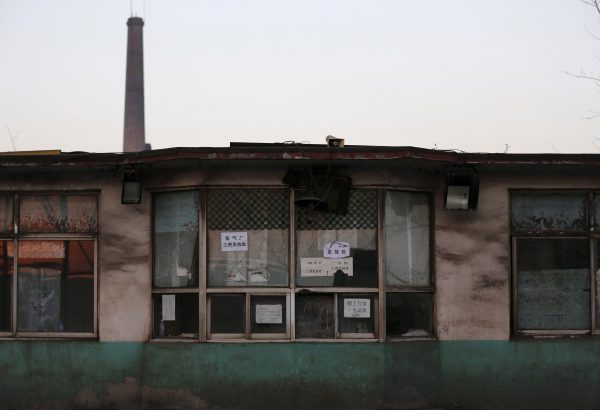Overinvestment in steel coupled with a lack of effective demand led to this situation. Being the world’s largest producer of steel, China cannot shy away from responsibility for the global steel market.
A decade ago, China laid down its blueprint for economic structural adjustment in the 2005 Report of the National Development and Reform Commission, placing special emphasis on the steel industry. The plan clearly aimed to ‘develop the iron and steel industry into an industry with international competitive capacity that may basically satisfy the demand of the national economy and social development in terms of quantity, quality and varieties’. Article 1 of the Report went on to add, ‘The comprehensive competitive capacity of iron and steel industry may reach to the international advanced level so that China may become a large country in iron and steel production and a great power country in world-wide competitiveness’.
The plan was in keeping with the government’s vision to modernise the country’s infrastructure, construction and manufacturing industries. By 2006, China had become the world’s largest steel exporter by volume, up from the fifth largest in 2005. Accordingly, global steel production over the past decade has doubled from around 800 million tonnes to around 1.6 billion tonnes a year, mainly due to China, who accounts for nearly half the world’s total production.
At present, China is able to sell steel at a price lower than any other producer in the market. A unique feature of the Chinese steel market is that it is dominated by state-owned enterprises. These Chinese factories continue to maintain high levels of steel production rather than shut down, even when making losses. Like most government-backed enterprises with deep pockets, the objective of these firms is to maximise revenues rather than profit: the higher the revenues from steel mills, the higher the tax collections for the local government. Although data is not available easily, analysts have argued that government subsidies for energy are responsible for China’s steel overcapacity.
This excess capacity became a problem when the Chinese government decided to move away from investment-led growth. With the burst of the real estate bubble, domestic demand declined. This led to state-owned steel mills dumping their supply glut in foreign markets. As a result, global prices also started falling. Many countries initiated measures to protect their domestic steel industry by imposing anti-dumping or countervailing duties. These included the United States, the European Union, India and Brazil.
The recipe for disaster was complete when, along with the change in economic model, Chinese bank credit was restricted. Traders of steel had no option but to sell their stockpiles in the depressed market because banks disallowed any loan extensions. China’s banking regulatory authority alleged that steel traders had taken huge loans as illicit borrowing to invest in real estate or the stock market. These had left the banks with bad loans since the traders had used steel as collateral to borrow the money.
In April 2016, a symposium on steel was organised by the OECD where the Chinese delegation claimed that weak demand since the 2008–09 financial crisis was the ‘fundamental cause’ of the excess capacity in steel, and that such imbalances needed to be tackled with global cooperation. China did shut down a few factories and a global glut was averted. It also promised that in the Thirteenth Five-Year Plan period from 2016 to 2020, China would cut crude steel capacity by 100 million to 150 million tonnes, which would necessitate finding alternative employment for 500,000 people.
For countries such as India, the global steel scenario has reduced investments in steel, hampering the country’s infrastructural development. Only recently, the country’s five-year ban on mining was lifted by a Supreme Court ruling in the states of Karnataka, Goa and Odisha. The timing was ironic since it coincided with plummeting global prices. Imports had reached a record 15 million tonnes in 2014–15 from a low of 3.2 million tonnes in 2013–14. Indian steel companies found it increasingly difficult to stay competitive. Tata Steel announced its plans for liquidation in Britain and reported a net loss of US$447 million in the first quarter ending June 2016.
Global uncertainties such as the upcoming US elections, European debt, and tight financing conditions continue to plague the steel industry. But the silver lining is that the Chinese economy is still growing, even though it may not be doing so in double digits. Infrastructure development is still taking place as urbanisation plays an important part in any growth story. Whether it is One Belt, One Road initiatives or railways, all projects will require steel.
Alka Chadha is a Visiting Assistant Professor at the Indian Institute of Management Tiruchirappalli.


Chinese industry is growing as the fastest industry in steel department.
Nice article